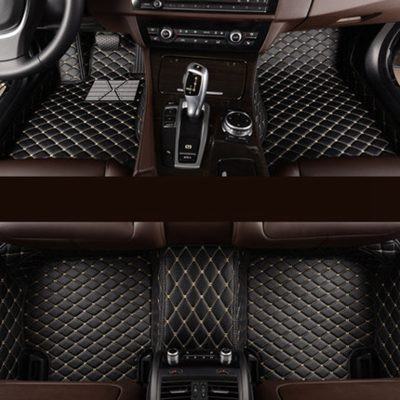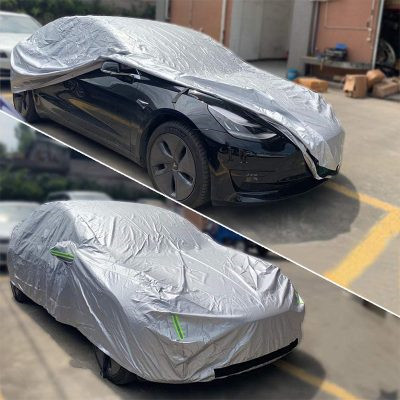Indoor and outdoor car covers serve different purposes and have key differences in terms of design, materials, and protection. Here are the main distinctions between indoor and outdoor car covers:
Indoor Car Covers:
- Material: Indoor car covers are typically made from lightweight, breathable materials like cotton, flannel, or satin. These materials are soft and gentle on your vehicle’s finish, preventing scratches and swirl marks.
- Protection: They primarily protect your car from dust, dirt, and minor indoor hazards like pet hair, garage debris, and light UV exposure. Indoor covers are not designed to withstand harsh outdoor elements.
- Breathability: Indoor covers are highly breathable, allowing moisture to evaporate and preventing condensation from building up under the cover.
- Custom Fit: Many indoor car covers are available in custom-fit options tailored to specific car makes and models for a snug and secure fit.
- Appearance: These covers often have a sleek, smooth appearance, making them suitable for indoor storage, car shows, or showrooms.
- Storage: Indoor covers are typically lightweight and easy to fold or roll up for compact storage when not in use.
Outdoor Car Covers:
- Material: Outdoor car covers are constructed from more robust and weather-resistant materials such as polyester, polypropylene, or synthetic fabrics. They are designed to withstand outdoor elements.
- Protection: They offer comprehensive protection against various outdoor hazards, including rain, snow, UV rays, hail, bird droppings, tree sap, and environmental pollutants.
- Durability: Outdoor covers are built to be more durable and resistant to wear and tear, making them suitable for long-term outdoor storage.
- Water Resistance: Many outdoor car covers are either water-resistant or waterproof, ensuring your vehicle remains dry even in heavy rain.
- UV Protection: They often feature UV-resistant coatings or layers to shield your car from the sun’s harmful rays, preventing paint fading and interior damage.
- Secure Fastening: Outdoor covers typically include features like elastic hems, tie-downs, and straps to secure the cover in place and prevent it from blowing away in strong winds.
- Ventilation: Some outdoor covers have built-in ventilation systems or vents to promote airflow and reduce moisture buildup under the cover.
- All-Season Use: They are designed for year-round use and can withstand extreme temperatures and various weather conditions.
- Storage: Outdoor covers may be bulkier and heavier than indoor covers, making them less convenient to store when not in use.
Choosing the Right Cover:
When choosing between indoor and outdoor car covers, consider the following factors:
- Storage Location: If you primarily store your vehicle indoors in a garage or a covered area, an indoor cover may be sufficient. For outdoor storage, an outdoor cover is essential.
- Weather Conditions: Consider the climate and weather conditions in your area. If you experience heavy rain, snow, or extreme heat, opt for an outdoor cover with the appropriate weather-resistant features.
- Vehicle Usage: If you plan to use the cover regularly or take it on trips, a lightweight and portable indoor cover may be more convenient.
- Budget: Outdoor covers with advanced features tend to be more expensive than indoor covers. Choose one that fits your budget while meeting your protection needs.
- Vehicle Size and Fit: Ensure the cover you select is the right size and fit for your vehicle to provide maximum protection and ease of use.
Ultimately, the choice between indoor and outdoor car covers depends on your specific storage and protection requirements.




















